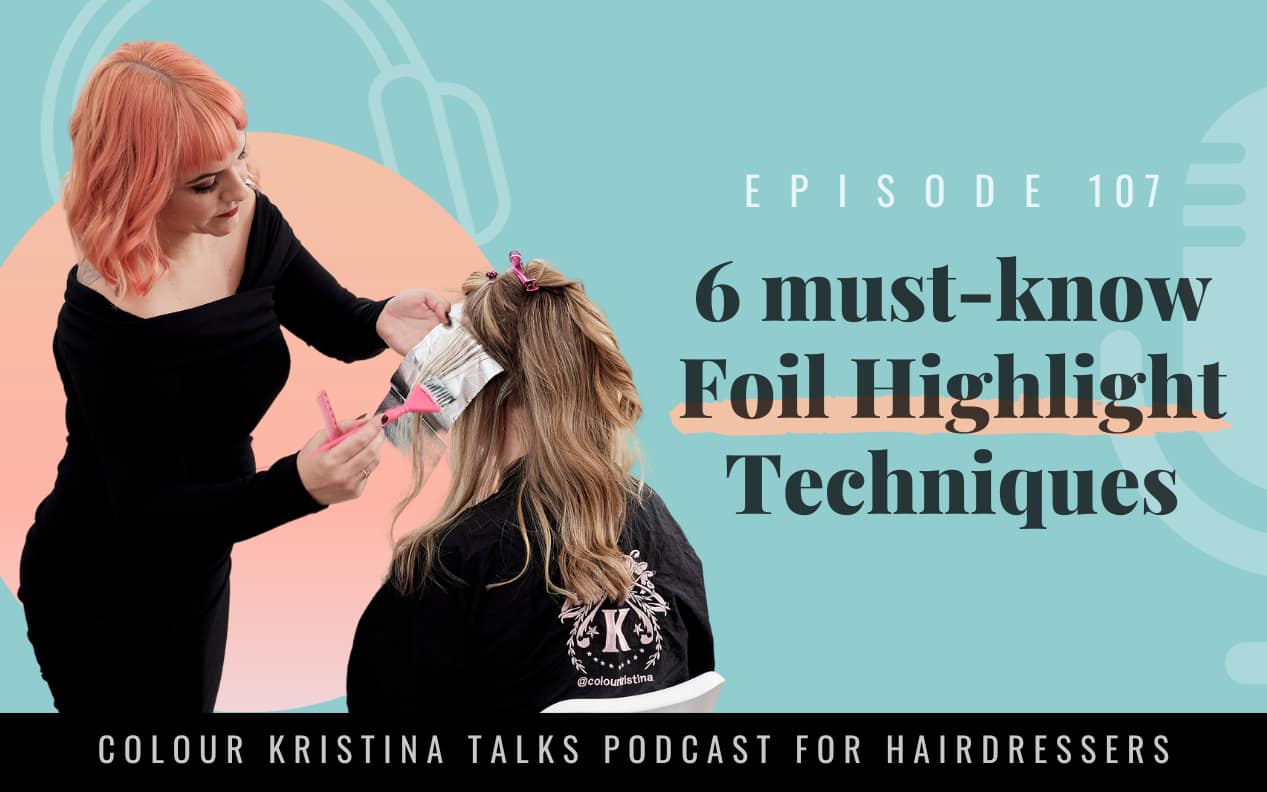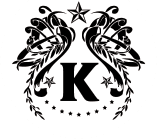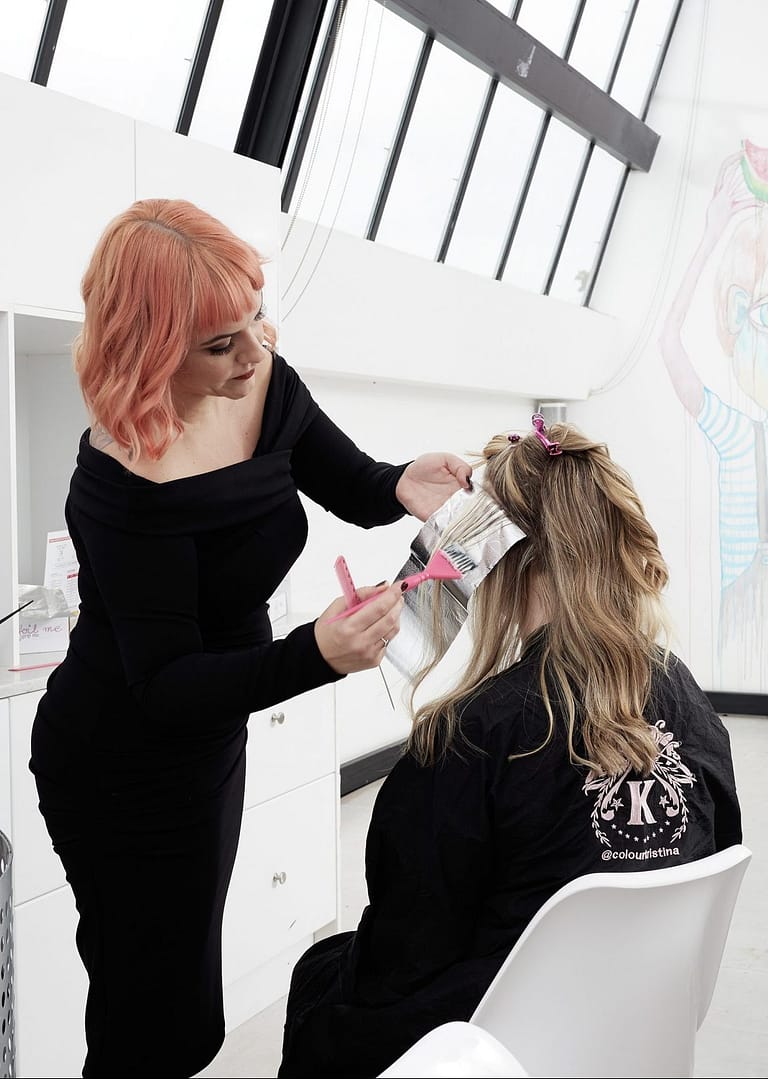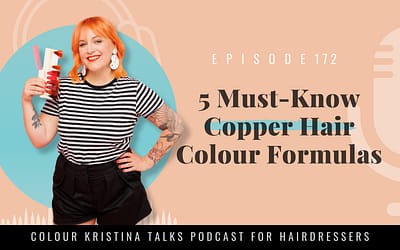
Episode 107
6 must-know Foil Highlight Techniques

What I'll be talking about
This is the third follow-on episode from two of my most popular shows. In episode 91 we discussed the 7 must-know techniques for haircolour sucess, and I promised to create another couple of poddys to help expand on the 3 different colour fundamentals you need for succes, including the topic of 6 must-know colour corrections in episode 102 and finishing off this mini-series with this episode 107 on your 6 must-know foil highlight techniques.
Show notes for episode 107
I love foiling! I love foil highlights! And I am absolutely not the only hairdresser that loves and utilises foil fundamentals for haircolour success.
Balayage has evolved to include so many foiling techniques, such as Foilyage, Blendage, Tip Outs, Wide Jumbo foils placed in hair with Foil and Balayage Boards, to name just a few.
Let me take the guesswork out of the foil angles, techniques and placement for you so you can just focus on the formula. If you’re needing to freshen up your foil know-how, this is the podcast for you!
FOIL HIGHLIGHT FUNDAMENTALS
In this podcast we deep dive into the 4 highlight techniques that every colourist must know:
- Full Head Highlights with horizontal back sections – this is a classic. Divide the back of the head into thirds or three sections that start at the crown and end at the nape. You can fit three foils wide side by side across the back. Great for maximum coverage. The front and top sections can be customised to suit your vision, including diagonal, horizontal or vertical to parting. A trend that’s making a comeback is herringbone through the top parting.
- Full Head foil Highlights with 4 quarter sessions containing diagonal slices – Another classic! This one is much faster to apply because you’re only dealing with 4 sections instead of 6 sections like a classic full head. Slicing makes it even faster than weaving, so go fo it on those heads that need texture and hair with layers or movement.
- ¾ Head Foil Highlights – perfect for bobs and shorter or medium styles. You don’t need to colour all of the head for a natural look. This is where a ¾ head comes in to play in your repertoire as an expert colorist. For any hair cut that has graduation or disconnected undercuts or underlayers a ¾ head is your best option.
- ½ Head Foil highlights – suits natural blondes that are ok with leaving the hair underneath their crown natural. This is one of the most popular services with my clients. I like to do 4 quadrants that begin coloruing below the swirl of their crown for a contemporary look that grows out softly. Another method I suggest for clients that need maximum lift is to divide the back of the head into 3 sections and stack foils horizontally & then pivot at the front to do vertical hairline foils and pivot again for horizontal foils to the parting above the temples. You must consider how the client wears their hair and place foils where they need to see maximum colour.
- ¼ Head foil highlights or what’s known as a Crown and Parting – this is purely a maintenance colour. Not a stand alone technique. I think this is the most common mistake hairdressers make with foiling by treating to pelase a client on a tight budget or someone that is asking for a sunkissed result by just applying some foils through the top and then wondering why they complain that it looks top-heavy. A Crown and Parting is a curved section that starts from temple to temple either side of the parting, including a few around the face. Designed as a maintenance for a full head of ½ head service within a 4-6 week regrowth cycle.
- Sparkle foils or surface layer foils – these are a new one that I just had to add onto my class top 5 foil techniques to make it 6 must-know techniques. Fashion friendly names make clients fall in love. I love a sparkle foil because it is exactly what is sounds like, just a little shoosh and a little sparkle to their existing colour. No more than 10 foils are needed to create a sparkle, so its a perfect option for thos little gaps you need to fill in your day by suggesting to clients that are already booked in with you.
Listen to episode 107 of the Colour Kristina Talks Podcast for Hairdressers to learn the 6 must-know Foil Highlight Techniques you need for hair colour success!
Links and resources
link to my insta @colourkristina
link to @colourkristinatalkspodcast
Like & follow Facebook page Kristina Russell Colourist
EP 28: The only 3 Foil Highlight Angles you need to know!
Leave a review
If you enjoyed this episode, I have a favour. Please take two minutes to subscribe and write a rating and review. You can do that on Apple Podcasts right now by clicking here. If you are an android user, you can follow the podcast on Spotify here. These actions will help my podcast reach more people, and I would be truly grateful. Thank you so much.
Recent
podcasts
EP 172: The 5 Must-Know Copper Formulas for Every Brand You Need to Know
Wondering if Chat GPT can help you formulate haircolour? In this episode, we answer that question.
EP 171: Balayage & Toning Tips for Red and Copper Hair Clients
In this episode, I'll be talking about balayage and toning strategies for redheads and why they are so different to working with Blondes, Brondes and Brunettes.
EP 170 [EXPIRING EPISODE]: HOW TO ACHIEVE COPPER HAIR MASTERCLASS REPLAY
Learn:
How to formulate Reds and Coppers in the salon using the 5-6-7-8 levelling system that works with every single hair colour brand
How to avoid the 2 biggest mistakes Hairdressers make when colouring reds and copper Haircolour
The secret to hair painting “natural” tones in Reds and Coppers when a client requests classic tones as opposed to high-fashion hair colours or vivid tones
Strategies to boost your confidence to attract new clients to your salon seeking red hair colour – even if you're a total newbie, an experienced hairdresser that is scared of making costly mistakes or you’re avoiding reds altogether
EP 169: Chat GPT Prompts to help you formulate hair colour.
Wondering if Chat GPT can help you formulate haircolour? In this episode, we answer that question.






![EP 170 [EXPIRING EPISODE]: HOW TO ACHIEVE COPPER HAIR MASTERCLASS REPLAY](https://mlonhhjeqfif.i.optimole.com/cb:Hmjb.fb7/w:400/h:250/q:mauto/rt:fill/g:sm/f:best/https://kristinarussell.com.au/wp-content/uploads/2023/10/EP-153.png)
